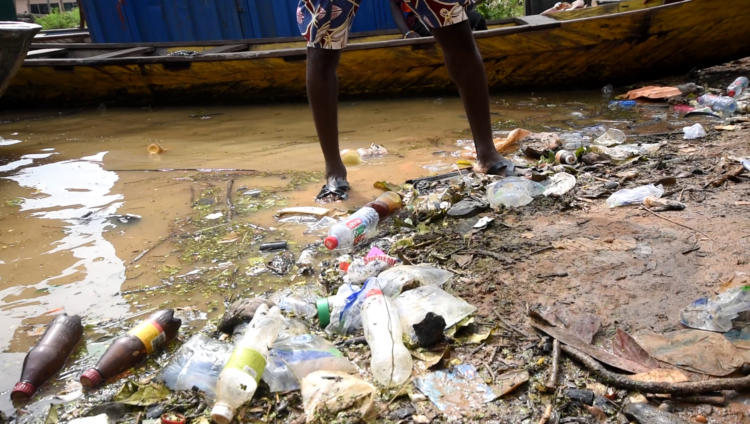Watching Ghana Television this morning and hearing panelist talking about hospitals in the Volta Region recording high snake bite cases even unknown to the victims who only get to know about their conditions after reporting sick at the health facility.
This pushed me to my pen and paper to write to caution government on the impending danger stirring us in the face and why we must be swift in our actions to have the situation under control or be subjected to the reverse.
One of the primary concerns arising from this dam spillage is the potential outbreak of diseases such as cholera, typhoid, malaria, diarrhea, and skin infections, which can be transmitted through contaminated water, food, soil, and contact with infected individuals or animals. The risk is heightened by the poor sanitation and hygiene conditions in the flooded areas, where pit latrines, septic tanks, garbage dumps, and animal carcasses have been washed away or mixed with the floodwaters. The absence of safe drinking water, suitable shelter, food, and medical care further increases the vulnerability of the affected population to infections.
Another area to pay attention to is the potential exposure to toxic chemicals and pollutants from oil spills, industrial waste, agricultural runoff, and mining activities. These substances can contaminate groundwater and surface water sources, affecting aquatic life and biodiversity and potentially causing acute or chronic health effects such as irritation, inflammation, poisoning, cancer, and reproductive disorders
The dam spillage has created a favorable breeding ground for mosquitoes, potentially leading to an increase in malaria and other vector-borne diseases. A report by the Ghana Health Service (GHS) has indicated a 41% rise in malaria cases in the Volta Region between January and September 2023 compared to the same period in 2022, partly attributed to the spillage and its aftermath, as well as the low coverage of insecticide-treated nets (ITNs) and indoor residual spraying (IRS) in the region.
Furthermore, the psychological impact on the affected people, especially children, who have experienced trauma, loss, and displacement. Some may suffer from stress, anxiety, depression, and post-traumatic stress disorder (PTSD), adversely affecting their mental health and overall well-being.
According to the National Disaster Management Organization (NADMO), over 31,000 individuals have been affected by the dam spillage, with many residing in makeshift camps or beneath trees. This dire situation has disrupted the lives, education, and health of these affected communities and poses a serious threat to the environment.
The government, in collaboration with NADMO and other agencies, have initiated an emergency response effort to assist the affected communities and measures including the distributing of relief items such as food, water, blankets, mattresses, tents, and mosquito nets to the displaced individuals has been effective with individuals and organizations assisting NADMO to provide for the displaced victims.
It is vital to consider establishing an emergency contact center to respond to calls from individuals and communities in need of assistance, deploying healthcare personnel and mobile clinics to provide medical care and screen for diseases, distribute drugs and vaccines for cholera, typhoid, hepatitis B, and tetanus prevention, conducting public education and sensitization campaigns on hygiene practices, disease prevention, and environmental protection and as well collaborate with local authorities, traditional leaders, civil society organizations, and international partners to coordinate relief efforts appropriately.
While the government’s response has been commendable, there is still room for improvement and further interventions. Some of the recommendations include enhancing surveillance and monitoring of disease outbreaks and environmental hazards in the affected areas, increasing access to safe drinking water, sanitation facilities, and waste management systems, providing psychosocial support and counseling services for the affected individuals, restoring educational and livelihood opportunities for the affected children and adults and developing a disaster preparedness plan that includes early warning systems, evacuation procedures, and contingency measures for future dam spillages.
Conclusion
The Akosombo dam spillage has evolved into a humanitarian disaster, exposing thousands of people to various health risks. While the government has taken initial steps to mitigate the situation, additional efforts are required to prevent an epidemic and ensure long-term recovery. The spillage also underscores the need to reconsider Ghana’s energy policy and environmental management practices.
As climate change intensifies, rainfall patterns and water levels and the Volta Lake become increasingly unpredictable, there is a demand for sustainable and resilient sources of power generation. Additionally, better regulation and enforcement of environmental standards and safeguards are essential to protect the Volta Basin and its resources from pollution and degradation. The dam spillage serves as a wake-up call for all stakeholders including Ministry of Environment Science, Technology and Innovation (MESTI), EPA, Forestry Commission, Lands and Natural Resources, Food and Agriculture, Water Resources Commission and CSO’s to act responsibly and collaboratively to safeguard the health and well-being of both the people and our environment.
Health, they say, is wealth.
WRITTEN BY: Mabel Delassie Awuku ‐ INFORMATION SERVICES DEPARTMENT


Comments are closed.